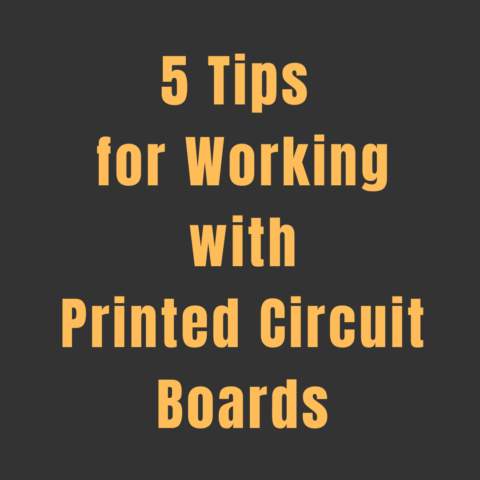Anyone can learn to work with printed circuit boards. All the knowledge and tools that you need to embark on this journey are freely available online. Once you know what you are doing, a working knowledge of PCBs enables you to pursue advanced electronics projects and even build your own hardware. Here are some tips to help you along the way.

Don’t Underestimate the Power of Good Organization
Keeping yourself organized will make a huge difference when working with PCBs. Most people start with little DIY electronics kits that contain a PCB and components for you to assemble. Before you begin assembling the pieces, lay them out in an organized way.
Not only will this help you to visualize the steps ahead of you, but it will also give you the chance to make sure that you have all the pieces you need. If you buy more advanced kits containing lots of components, screws, and other small parts, it is worth making sure everything that’s supposed to be in the kit is there.
Learn to Love Planning
Proper planning is another simple habit that will make working with PCBs considerably easier. Like getting organized before you start working, planning beforehand helps you to get your projects clear in your head.
Breaking large projects down into smaller steps makes them easier to handle. It also enables you to visualize exactly how you will progress through each stage.
Bathe Your Boards in Cleaning Solution
Cleaning your PCBs is a critical step when you are building your own boards. It might seem unwise to submerge your electronics in liquid, but as long as you use the right liquid, submerging your board is the best way to clean it. You should clean your boards properly before and after you populate them.
It is also worth buying some isopropyl alcohol and Q-tips. Together, these will enable you to clean small spots and hard to reach components. Once you have populated your board with components, there are more places for dust and debris to accumulate. Compressed air can also be useful for removing dust.
Use Poster Putty to Avoid Losing Small Objects
Building PCBs means working with numerous small pieces at once. And that’s if you’re only adding components to PCBs. If you are taking on more advanced PCB projects, you can find yourself dealing with all manner of fiddly parts.
Poster putty is a massively underappreciated tool for keeping hold of small pieces that are liable to go missing. If you are working with small components like TRIACS, it helps to have somewhere to put them where they won’t get lost. You can look up triacs and other components on Octopart. Their datasheets will give you detailed information about individual components, including their size.
Once you have some experience working with printed circuit boards, and you have made the inevitable mistakes that every beginner makes, you will realize that they are remarkably easy to get to grips with. The tips above will help you produce the best boards you can as soon as possible.
